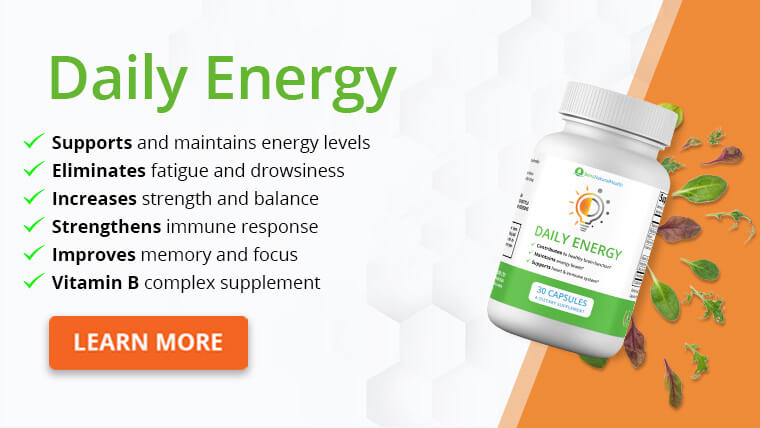Cymbalta is a medication used to treat several different health conditions, such as mood disorders and certain types of pain. In 2020, it was estimated that over 22 million prescriptions were written for Cymbalta in the United States.
While there aren’t many things that interact with Cymbalta nutrition-wise, there are some foods you might consider eating and avoiding while taking it, depending on the condition for which you’re taking Cymbalta.
In this article, we’ll cover foods to eat and avoid while taking Cymbalta, as well as other safety considerations and potential side effects.
What is Cymbalta (Duloxetine)?
Cymbalta is the brand name for duloxetine, a prescription medication in a medication class called selective serotonin and norepinephrine reuptake inhibitors (SNRIs).
Cymbalta works by increasing amounts of hormones called serotonin and norepinephrine in your brain.
These hormones help to maintain mental balance (which can help treat depression) and also stop the movement of pain signals in your brain, which can be useful if you have certain health conditions that cause pain.
The United States Food and Drug Administration (FDA) first approved Cymbalta in 2004. It comes in different strengths, including 20 milligrams, 30 milligrams, and 60 milligrams.
Your dosage of Cymbalta will vary based on the condition you’re taking it for, your response, and other factors.
A typical starting dose is 20 milligrams twice daily or 30 milligrams once daily for a week, then increasing to 60 milligrams daily (either 30 milligrams twice daily or 60 milligrams once daily).
Get Your FREE Diabetes Diet Plan
- 15 foods to naturally lower blood sugar levels
- 3 day sample meal plan
- Designed exclusively by our nutritionist
What is Cymbalta used for?
Cymbalta is used to treat several different health conditions, such as:
- Major depressive disorder (depression) in adults. Depression is a common mental health disorder that’s estimated to impact 10% of Americans.
- Anxiety: like depression, anxiety is one of the most common mental health disorders.
Pain in people with conditions like diabetic neuropathy (nerve damage), chronic back pain or other types of musculoskeletal pain, and fibromyalgia (a condition that causes widespread pain). - Some “off-label” uses for Cymbalta (using it for conditions it’s not approved to treat) include chemotherapy-induced peripheral neuropathy and stress urinary incontinence.

Foods to avoid while taking Cymbalta
There aren’t any foods that interact with Cymbalta. However, depending on the reason you’re taking Cymbalta (depression, diabetic neuropathy, etc.), we’ll suggest some potential foods to avoid to help your symptoms.
Foods and drinks high in added sugar
If you’re taking Cymbalta for conditions like diabetic neuropathy, other types of chronic pain, or depression, limiting your added sugar intake can help promote healthy blood sugar levels, improve mood, and may help reduce inflammation.
According to a study, added sugars might contribute to depressive symptoms. Cutting back on added sugars while on Cymbalta could help improve your mood even more than if you didn’t change your diet.
Some of the biggest sources of added sugars are:
- Soda (both cola and caffeine-free varieties like lemon-lime, grape, etc.)
- Sweetened iced teas
- Sweetened coffee drinks
- Fruit-flavored drinks
- Energy drinks
- Desserts and sweets
- Flavored foods like sweetened cereals, yogurts, nutrition bars, etc.
- Some soups and condiments (sugar is often used to balance the acidity of foods like tomatoes)
To help reduce your intake of added sugar while on Cymbalta:
Check the nutrition facts label for added sugars. The goal per the United States Dietary Guidelines is to limit added sugars to fewer than 10% of your total calories, which would be 50 grams for a 2,000-calorie diet.
However, the American Heart Association recommends a much lower amount of no more than 24-36 grams per day for women and men per day, respectively.
Refined grains
Like foods high in added sugars, refined grains (those that have been processed to remove the healthy high-fiber parts) are associated with higher levels of inflammation, high blood sugar levels, and symptoms of depression.
Refined grains are not only lower in fiber but other nutrients like magnesium, B vitamins, and iron, which are all important for your overall health.
Some refined grains to avoid while taking Cymbalta include:
- Any grain made with enriched or white flour, such as white bagels, bread, pitas, etc., enriched pasta, flour tortillas
- White rice
Foods high in saturated fat
While eating some saturated fat is fine, if the majority of the fat you consume is saturated, it could become a problem.
Diets high in saturated fat are not only linked with heart problems but increased levels of saturated fatty acids are associated with the progression of neuropathy.
In addition, if you’re experiencing nausea and vomiting from Cymbalta, cutting back on high-fat/greasy foods can help ease those symptoms.
Saturated fat primarily comes from full-fat animal products, but it’s also found in some plant foods, mainly coconut and palm oils.
Examples of foods high in saturated fat include:
- Beef (especially non-lean cuts)
- Lamb
- Pork
- Poultry with the skin on
- Lard
- Full-fat dairy (butter, cream, milk, cheese, yogurt, etc.)
- Coconut (including coconut oil)
- Palm oil and palm kernel oil
- Some baked and fried foods (can be coated with butter, lard, etc., before cooking)
Can you drink alcohol while taking Cymbalta?
It’s not a good idea to drink alcohol while on Cymbalta. Alcohol can worsen symptoms of depression and anxiety, which are some of the common conditions Cymbalta is used to treat.
Cymbalta and drinking alcohol can cause liver damage on their own. That means that drinking alcohol while on Cymbalta increases your risk of liver damage even more.
If you do choose to drink alcohol while taking Cymbalta, it’s important to practice careful moderation and avoid binge drinking.
If you notice any signs of liver problems (as mentioned earlier under the potential side effects of Cymbalta), you need to contact your healthcare provider immediately and stop drinking alcohol.
Foods to eat while taking Cymbalta
Magnesium-rich foods
Magnesium deficiency is relatively common, affecting up to 50% of Americans.
A deficiency in magnesium is linked with depression symptoms – a condition Cymbalta is commonly used to treat.
If you’re taking Cymbalta for diabetic neuropathy, know that magnesium might also help promote healthy blood sugar levels by improving insulin resistance.
While taking Cymbalta, try to eat magnesium-rich foods such as:
- Almonds
- Black beans
- Cashews
- Dark chocolate
- Edamame
- Peanut butter
- Peanuts
- Pumpkin seeds
- Soymilk
- Spinach
- Whole wheat bread
Omega- 3 fatty acids
Omega-3 fatty acids are well-known for their anti-inflammatory effects. Since Cymbalta is used to treat a range of pain-related conditions (pain is often linked with inflammation), it’s not a bad idea to include omega-3-rich foods in your diet while taking Cymbalta.
In addition, a study found that omega-3 fatty acids might help with neuropathic pain, which is a main diagnosis Cymbalta is prescribed to treat.
Some of the best sources of omega-3 fatty acids include:
- Chia seeds
- Cod liver oil
- Flaxseeds
- Oily fish like salmon, sardines, and mackerel
- Oysters
- Walnuts
Fruits and vegetables
Fruits and vegetables contain beneficial antioxidants and vitamin C, which can help fight inflammation.
Studies show vitamin C might also improve nerve pain in diabetic neuropathy!
All fruits and vegetables are beneficial to eat while on Cymbalta, but those that are particularly rich in vitamin C include:
- Bell peppers
- Citrus fruits – oranges, kiwi, lemon, grapefruit, etc.
- Cruciferous vegetables like broccoli, Brussels sprouts, cabbage, and cauliflower
- Strawberries
- Tomatoes
- White potatoes
Protein
If you’re taking Cymbalta for diabetic-related nerve pain, it’s important to control your blood sugar levels to help reduce further damage to your nerves (neuropathy).
Eating adequate amounts of protein can help stabilize your blood sugar levels since protein doesn’t raise your blood sugar levels like carbohydrates do.
If you experience weight loss from Cymbalta, eating adequate amounts of protein can help preserve your muscle mass. (Rapid weight loss can cause your body to burn muscle mass for energy.)
Some examples of protein-rich foods include:
- Eggs
- Meat (beef, lamb, pork, poultry, etc.)
- Fish
- Legumes
- Dairy products like Greek yogurt, cheese, and milk (unsweetened and/or low-fat as needed)
- Nuts and seeds
- Soy (edamame, soy products like tofu, etc.)
- Whey protein (from milk); a common ingredient in protein powders

What else should you avoid while taking Cymbalta?
Medications that interact with Cymbalta
Cymbalta can interact with certain medications, so you should ask your healthcare provider or pharmacist if you’re taking Cymbalta and are also prescribed:
- MAOI inhibitors (a class of medications used as antidepressants; includes isocarboxazid, linezolid, metaxalone, methylene blue, moclobemide, phenelzine, procarbazine, rasagiline, safinamide, selegiline, tranylcypromine)
- Antiplatelet medications
- Anticoagulants (blood thinners) such as warfarin (Coumadin) and others
Operating heavy machinery
If you experience symptoms like blurry vision, dizziness, and fatigue, you should avoid operating heavy machinery or engaging in any activity that could become unsafe if you develop these side effects.
Pregnancy
It’s not recommended to take Cymbalta if you’re pregnant or are planning to become pregnant.
However, it’s likely safe to take while breastfeeding, but you should always ask your healthcare provider or baby’s pediatrician to make sure.
Should you take Cymbalta with food?
You can take Cymbalta with or without food. If you develop symptoms like nausea or vomiting, it can help to take Cymbalta with food to help minimize these side effects.
Even taking Cymbalta with a glass of milk can help ease symptoms compared to taking it on an empty stomach.
Otherwise, you should take Cymbalta consistently, as prescribed, and around the same time(s) each day so that you don’t accidentally skip any doses.
Skipping doses can impact how well Cymbalta works, so the best time to take Cymbalta is when you’ll remember to take it!
Conclusion
Cymbalta (duloxetine) is a prescription medication used to treat depression, nerve pain, and other types of pain.
Some potential foods to avoid while on Cymbalta (varying depending on the reason you’re taking it) include foods and drinks high in added sugars, refined grains, and a diet high in saturated fats.
Foods to eat while taking Cymbalta include magnesium-rich foods, omega-3 fatty acids, fruits and vegetables (particularly those rich in vitamin C), and protein-rich foods.
Explore More

Uncovering The Side Effects Of Cymbalta Sexually (Duloxetine).






